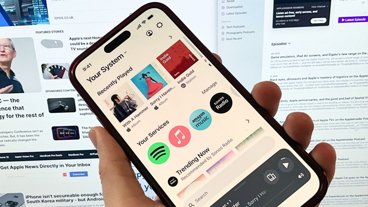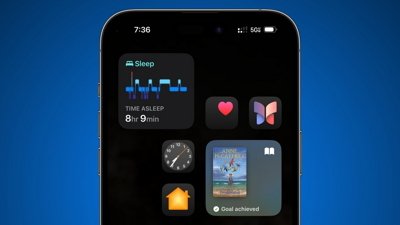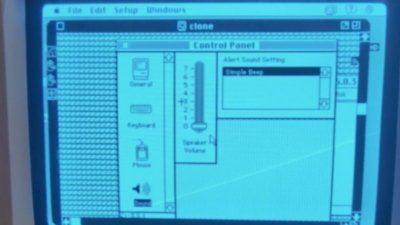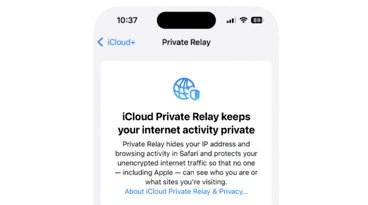Brightcove adds support HTTP Live Streaming for Apple iOS devices
Launched among the features of its "Brightcove 5" online video distribution platform, HTTP Live Streaming enables mobile devices to stream video while adapting to changing bandwidth availability as the user moves between WiFi and mobile networks. Brightcove is also strengthening its support for HTML5 video distribution with advanced analytics that enable broadcasters to access the same types of information about their viewers that Flash currently offers.
Apple's video streaming standard goes mainstream
Apple added support for HTTP Live Streaming in iOS 3.0 in the summer of 2009, after proposing the technology as an open standard to the Internet Engineering Task Force in May.
Rather than using a specialized video streaming protocol such as RTSP (Real-Time Streaming Protocol), HTTP Live Streaming delivers video as short segments of video files using the same protocol that web browsers use. This enables it to work seamlessly through existing firewalls the same as other web traffic.
Additionally, HTTP Live Streaming can make multiple versions of a video available, enabling the client player to dynamically select higher or lower quality video segments on the fly as its network speed improves or degrades.
Apple's HTTP Live Streaming is similar to Microsoft's Smooth Streaming server product tied to its Silverlight client plugin. However, Apple's version is not attached to any particular proprietary encoder, server or player client. Instead, it exists as an IETF standard that anyone can implement.
Apple has started using HTTP Live Streaming to broadcast its own media events, including its recent "Back to the Mac" session, making them available to both desktop clients using QuickTime X and mobile devices running at least iOS 3.
Earlier this year, a third party filed suit against both Apple and Microsoft, claiming that both of their streaming technologies infringe upon its patents; that case is still being argued.
Further assaults on Adobe Flash, Microsoft Silverlight
In supporting HTTP Live Streaming, Brightcove gains the ability to serve long format video to iOS devices using the same technology Netflix uses to stream video to iPad and iPhone users. This shift comes at the expense of Adobe's Flash and Microsoft's Silverlight.
in 2008, Netflix joined Major League Baseball and NBC as high profile adopters of Microsoft's Silverlight video streaming technology, but following the broadcast of the Summer Olympics, NBC reverted from Silverlight to Flash; MLB similarly decided to drop Silverlight.
All three have since adopted HTTP Live Streaming to reach iOS users, and Microsoft has even added support for HTTP Live Streaming to its IIS Smooth Streaming servers. In addition to Netflix, other Flash-centric video streaming services such as Hulu (and now Brightcove) have similarly added support for HTTP Live Streaming.
While any client should be able to add support for HTTP Live Streaming compatible with QuickTime X and iOS, neither RIM nor Google have implemented this, causing MLB to warn users of its MLB At Bat application that "the BlackBerry and Android versions of the application do not currently support the Live MLB.TV streaming because these devices do not support the IETF HTTP live streaming specification for adaptive bit rate streaming that MLB.com uses to provide game video. As devices incorporate support, the feature sets will come into line."
Apple's influential installed base of iOS devices can now claim success in largely defeating proprietary standards, not just static video playback via Adobe Flash, but also the next arena of dynamic streaming.
Microsoft's Silverlight, once buoyed by the prospects of serving as a key video streaming architecture (much as Flash gained popularity as a static video distribution platform), has now been relegated into a minor role as a way to create software for the company's Windows Phone 7 devices.
The company's new focus on HTML5 rather than Silverlight has created a groundswell of panic among Windows developers who have invested heavily in Microsoft's proprietary plugin as an alternative to web standards, prompting Microsoft to assure them it will continue to support Silverlight even as it focuses on HTML5. However, the writing is on the wall for technologies that aren't supported by iOS, including Flash and Silverlight.
 Daniel Eran Dilger
Daniel Eran Dilger













 Amber Neely
Amber Neely
 Thomas Sibilly
Thomas Sibilly
 AppleInsider Staff
AppleInsider Staff
 William Gallagher
William Gallagher
 Malcolm Owen
Malcolm Owen
 Christine McKee
Christine McKee










20 Comments
Apple breaking ground again!
And yet all you hear about is "Apple's Walled Garden approach".
They may have things nice and tight regarding what they want and/or don't want on there devices.
But it seems like they are pushing more and more things to open up.
Read somewhere that Android 3.0 will be featuring FaceTime also. It will take somebody like Apple to show everybody else the way. Way to go.
"...a groundswell of panic among Windows developers who have invested heavily in Microsoft's proprietary plugin as an alternative to web standards..."
Stupid bet on MS' past dominance, now long over. Frankly, these devs got what they deserved.
And yet all you hear about is "Apple's Walled Garden approach".
It is the mantra of Apple-bashers, facts be damned.
Isn't this a little sensational to say "another nail" in the coffin? My impression is that it's still the incumbent video delivery protocol. Not on iOS devices, of course, but it was never there in the first place to kill off.
As with everything else that Apple has developed to replace Flash, it is extremely complex to develop http live streaming. You probably have no idea how many unix commands, make files and yum installs are required to encode and segment a video then configure variable streaming for multiple devices. The thing that made Flash so ubiquitous for video delivery is that CS Suite was simple to use and anyone could be streaming video within minutes. Just upload and go. Before you say 'another nail in the coffin' let's see you actually produce a single http live streaming file first.
Sure big time companies have the resources to deliver content regardless of difficulty but ask a regular videographer or graphic designer who probably doesn't even have their own server, let alone sudo privileges to make unix applications and encode on the command line, it just ain't gonna happen.